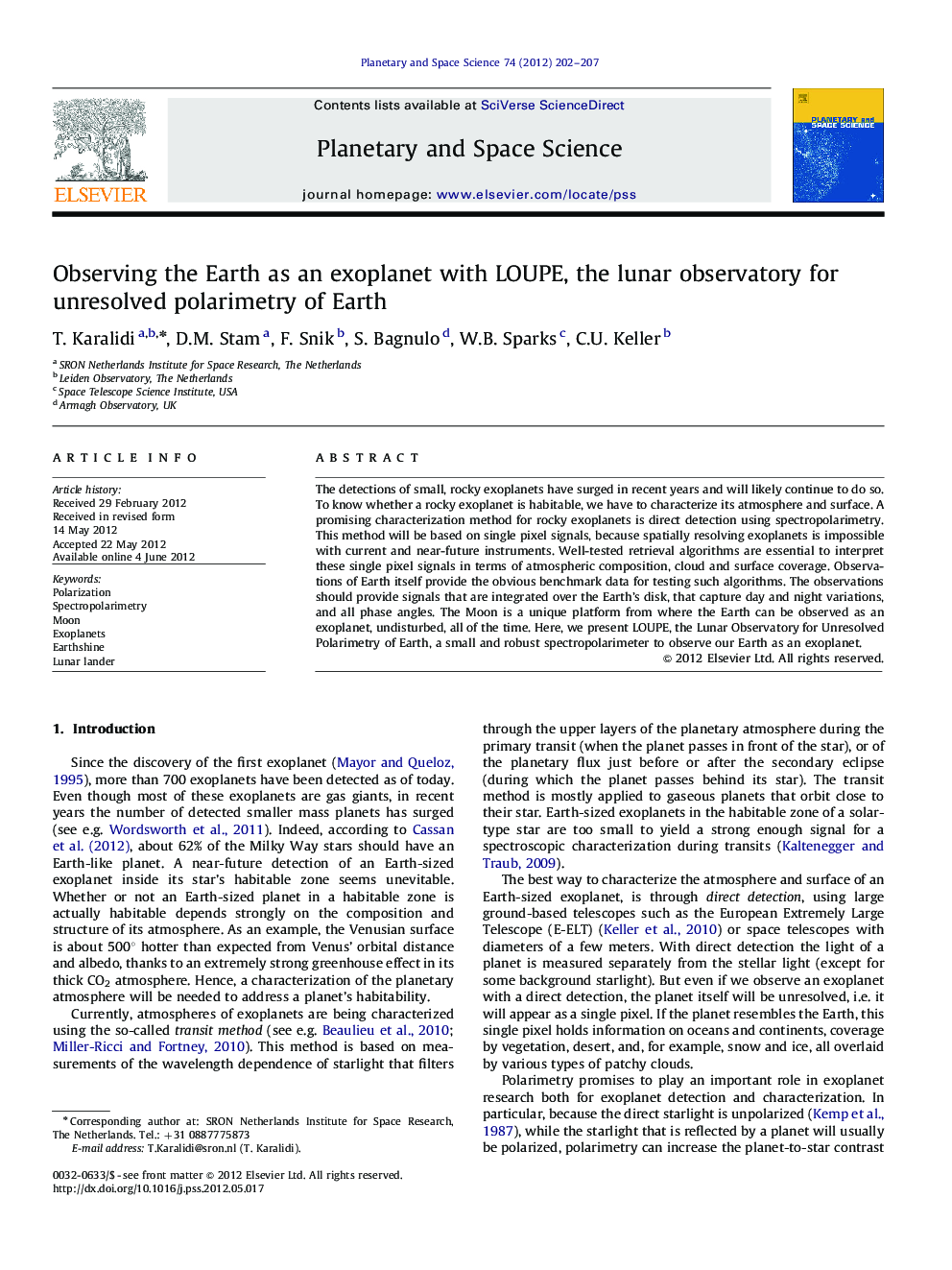| Article ID | Journal | Published Year | Pages | File Type |
|---|---|---|---|---|
| 1781398 | Planetary and Space Science | 2012 | 6 Pages |
The detections of small, rocky exoplanets have surged in recent years and will likely continue to do so. To know whether a rocky exoplanet is habitable, we have to characterize its atmosphere and surface. A promising characterization method for rocky exoplanets is direct detection using spectropolarimetry. This method will be based on single pixel signals, because spatially resolving exoplanets is impossible with current and near-future instruments. Well-tested retrieval algorithms are essential to interpret these single pixel signals in terms of atmospheric composition, cloud and surface coverage. Observations of Earth itself provide the obvious benchmark data for testing such algorithms. The observations should provide signals that are integrated over the Earth's disk, that capture day and night variations, and all phase angles. The Moon is a unique platform from where the Earth can be observed as an exoplanet, undisturbed, all of the time. Here, we present LOUPE, the Lunar Observatory for Unresolved Polarimetry of Earth, a small and robust spectropolarimeter to observe our Earth as an exoplanet.
► We present LOUPE, the Lunar Observatory for Unresolved Polarimetry of Earth. ► LOUPE is a small and robust spectropolarimeter that can observe the Earth as if it were an exoplanet. ► The Moon with its unique position with respect to Earth offers a unique platform for observing the Earth as an exoplanet. ► LOUPE measurements from the Moon will be a benchmark for future Earth-like exoplanet observations.
